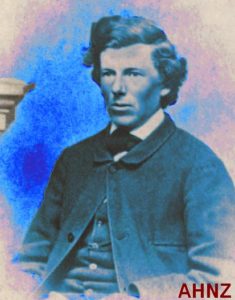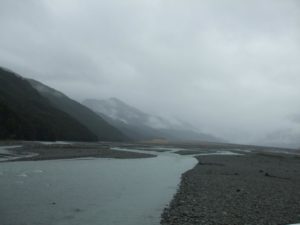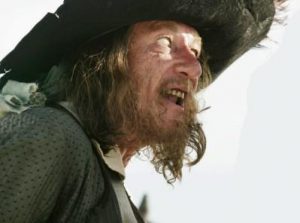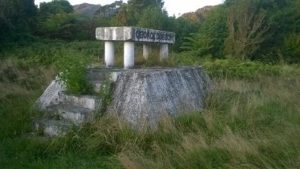1866: “Did you think I was a banker?”
May 27, 2020
By AHNZ
Today in New Zealand history, 28 May, 1866, George Dobson was murdered on the soil that would one day become the town named in his memory: Dobson. Today, near to the spot, is a 1870s monument this Canterbury Pilgrim who died in his province’s service a month short of what would have been his 27th birthday.
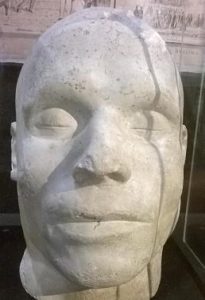 Dobson’s was one of the first lives taken on the rampage of the Burgess Gang. This was a gang of four London criminals who were exported to Australia who then formed an association in New Zealand. Richard Burgess (image right,) a well educated but narcissistic crook with Mummy issues, had just completed a stint of Hard Labour in Otago and was escorted to the border and told to start walking. Soon the gang was formed in Hokitika, the logical place for criminals to head for. Those held responsible for Dobson’s death, and the Mangatapu Murders to come, were executed and you can view their death masks on display at Nelson Provincial Museum.
Dobson’s was one of the first lives taken on the rampage of the Burgess Gang. This was a gang of four London criminals who were exported to Australia who then formed an association in New Zealand. Richard Burgess (image right,) a well educated but narcissistic crook with Mummy issues, had just completed a stint of Hard Labour in Otago and was escorted to the border and told to start walking. Soon the gang was formed in Hokitika, the logical place for criminals to head for. Those held responsible for Dobson’s death, and the Mangatapu Murders to come, were executed and you can view their death masks on display at Nelson Provincial Museum.
Dobsons’ Ship Came In
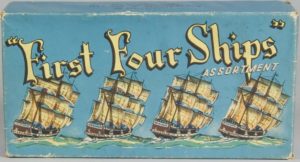 When Edward Dobson and his two young boys, George and Arthur, came to John Godley’s Canterbury in 1850 it wasn’t ready for them. Dobson Snr had come be an important man in the new colony and eventually he would offer his skills and have a long career as the Provincial Engineer. The Lyttleton Tunnel, Rangiora Main Drain, and New Zealand’s first railway were some of his projects. Initially, however, Canterbury was in the charge of Godley and then Henry Sewell who were not interested or not liquid enough to employ the great engineer.
When Edward Dobson and his two young boys, George and Arthur, came to John Godley’s Canterbury in 1850 it wasn’t ready for them. Dobson Snr had come be an important man in the new colony and eventually he would offer his skills and have a long career as the Provincial Engineer. The Lyttleton Tunnel, Rangiora Main Drain, and New Zealand’s first railway were some of his projects. Initially, however, Canterbury was in the charge of Godley and then Henry Sewell who were not interested or not liquid enough to employ the great engineer.
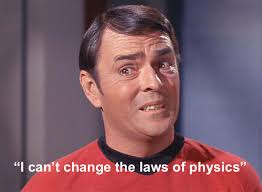 Only in late 1853, when the Canterbury Provincial Council (CPC) became a democratically elected body with Superintendent and an Executive, did Mr Dobson become the Scotty to the USS Canterbury. In those lean years, Dobson Snr sent his boys away to Tasmania and even sold (had to?) his Richmond Hill property at Mt Pleasant to the ferry guy except for his own house. When the CPC got rolling though his ship really did come in. His now teenage boys were returned and Dobson’s wife and other children immigrated to Christchurch too.
Only in late 1853, when the Canterbury Provincial Council (CPC) became a democratically elected body with Superintendent and an Executive, did Mr Dobson become the Scotty to the USS Canterbury. In those lean years, Dobson Snr sent his boys away to Tasmania and even sold (had to?) his Richmond Hill property at Mt Pleasant to the ferry guy except for his own house. When the CPC got rolling though his ship really did come in. His now teenage boys were returned and Dobson’s wife and other children immigrated to Christchurch too.
Such a Nice Young Fellow
In 1864 the West Coast gold rush was under way and, being part of Canterbury, the CPC was anxious to have a good road from the Pacific to the Tasman. They wanted the wealth to flow back East not escape offshore.
George’s younger brother, Arthur, had already located one of the possible routes. He had some trouble, being so young, in being taken seriously but older brother George lent his reputation in support of the pass Arthur had established¹. Not knowing this, the ADHD-prone Canterbury Superintendent James Fitzgerald set out with his own group to find a way through the Southern Alps². Up against Browning’s Pass, the one named after Dobson eventually won out: Arthur’s Pass. Perhaps it helped that the Dobson boys flattered future Superintendents by naming the features they discovered after them. The crossing of the Upper Waimakariri they named the Bealey (for Samuel Bealey) and a prominently conspicuous peak Mt Rolleston (for William Rolleston.) This may also point to whose side the Dobson’s were on in the political contest for Superintendent that raged during May 1866.
Elections were soon forgotten for the Dobsons who had lost their George. On 28 May, 1866, George was visiting the Arnold township storekeeper, Edward Fox, just outside Greymouth. Rather than take the easy way home by a boat on the Grey River, Dobson insisted on walking back via the bush track that is now NZ State Highway 7. His job title was Roading Engineer and New Zealand’s roads weren’t going to inspect themselves. Knowing hold cold and often wet it is along this stretch of country at the end of May we can admire George’s commitment although you might also say that it got him killed…
He said “he was such a nice young fellow, but after we stopped him we could not let him go, so I took him off the road about 200 yards, and there I “burked” him, meaning choked him. He said, laughing, as I was taking him into the bush, “Did you think I was a banker? Here is all I have–some £6 odd.” He said, “I buried him, compass and all–he had a compass with him.”- Burgess’ confession
The afore mentioned Burgess Gang was laying in wait. Fox, the Arnold storekeeper, also gold-buyer, had set a false signal that he and his stash of gold would be taking the Greymouth-Arnold River track. Really, he would be going by river. The diversion worked well for Fox but it’s part of the reason death was waiting for George on that road. It is known that Fox urged George Dobson not to walk but to join him on the river but I wonder if he said why?
“Usually I’d venture an opinion about what really happened but it all seems too circumstantial and endlessly trawled over that my enthusiasm isn’t rising to it.”- 1866: Mangatapu Murders
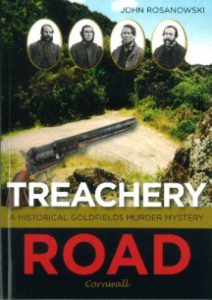 There are only theories as to who killed who because the gang turned on one another in a real-life Prisoners Dilemma situation after they were captured. Dozens of authors have been writing books about it ever since. According to Burgess it was his cohort, Joseph Sullivan who indeed ended the search by revealing the location of George’s shallow grave. According to Burgess, Dobson didn’t know what danger he was in and, laughing, said “Did you think I was a banker?”
There are only theories as to who killed who because the gang turned on one another in a real-life Prisoners Dilemma situation after they were captured. Dozens of authors have been writing books about it ever since. According to Burgess it was his cohort, Joseph Sullivan who indeed ended the search by revealing the location of George’s shallow grave. According to Burgess, Dobson didn’t know what danger he was in and, laughing, said “Did you think I was a banker?”
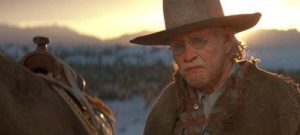 Shortly after, Dobson was beaten in the head four times violently (This was probably done with one of the weapons stolen from troopers (Armed Constabulary?) along with uniforms that the Gang had acquired in order to use for future robbery schemes.) Next, he was strangled to death by someone’s strong left hand, as the inquest would later discover. Not for another month would Dobson’s body be discovered near to where his 1920s concrete monument now stands. The Gang’s monuments are their death masks in the museum except for Sullivan. He seems to have lived on to boast about his deeds a bit like Emilio Estevez in Young Guns³.
Shortly after, Dobson was beaten in the head four times violently (This was probably done with one of the weapons stolen from troopers (Armed Constabulary?) along with uniforms that the Gang had acquired in order to use for future robbery schemes.) Next, he was strangled to death by someone’s strong left hand, as the inquest would later discover. Not for another month would Dobson’s body be discovered near to where his 1920s concrete monument now stands. The Gang’s monuments are their death masks in the museum except for Sullivan. He seems to have lived on to boast about his deeds a bit like Emilio Estevez in Young Guns³.
“Sullivan had lived , for many years at Wedderbum, Western Victoria. After the execution of hie mates, Sullivan returned to his old haunts. He was recognised, and had every hand raised against him. The necessaries of life were refused him. Storekeepers declined to supply hie wants, though he tendered money. Publicans would not draw liquor for him, though he claimed refreshment as a traveller. Even the gaols refused to receive him when he appealed for protection from assault, fancied or real The gaolers certainly hinted that to enter their gates he had to qualify himself by committing some crime. One hospitable policeman gave this blood saturated criminal shelter for a night in an unoccupied cell in the lockup. The last heard of the outcast wretch was that he was on tramp, swag-laden on a lonely road, heading anywhere fate might lead him. Like the Wandering Jew, there was no rest for the great criminal, and his ultimate fate is a mystery.”- Truth (Sydney 1899); Trove
George Dobson was given a monument which he shared with some others in Greymouth in 1868. I don’t know what became of that but in 1872 a concrete monument was put in the ‘town’ of Dobson to remember George. This image (left) is from March 2020 and shows a monument in need of rescue³½. And not for the first time…
“At the site of Dobson’s death a tin plate had been nailed to a tree. The details of the decision to provide a more permanent memorial here are unclear but it is recorded that around 1872 a bricklayer from Greymouth constructed the simple structure. An inscribed stone slab was supported by four columns on a stepped stone base. In 1947, because the structure was deteriorating, concrete columns were inserted and the whole base was concreted over. The local community has continued to ensure that this memorial is retained”- Heritage NZ
“The Dobson Memorial alongside the Brunner railway line is one of those which is very much neglected, and at present is in. danger of being overgrown. Either the Government or the local body should move without delay in having the surroundings of the memorial cleared, and the memorial itself left more presentable.”- Hokitika Guardian (1927); Papers Past
Someone should do something about that.
—
1 This letter is in the archives; Ref. Te Ara
2 Ref. 1864: Fitzgerald’s Picnic Party
3 The Treachery Road (2017) book claims to know something about where Sullivan ended up and who killed Dobson but I’ve yet to get hold of it
³½ See also Greymouth Evening Star (1912); Papers Past
Image ref. George Dobson; Alexander Turnbull Liberary; AHNZ Mod
Image ref. Richard Burgess’ death mask; Nelson Provincial Museum; AHNZ Archive (2019)
Note. It was Aurther Dobson who was Christchurch City Engineer when the Municipal Baths exploded.
Note 2021: The memorial now has a fresh coat of paint and has not been moved, despite the previous mayor’s initiative
 Like Comment Share
Like Comment Share

